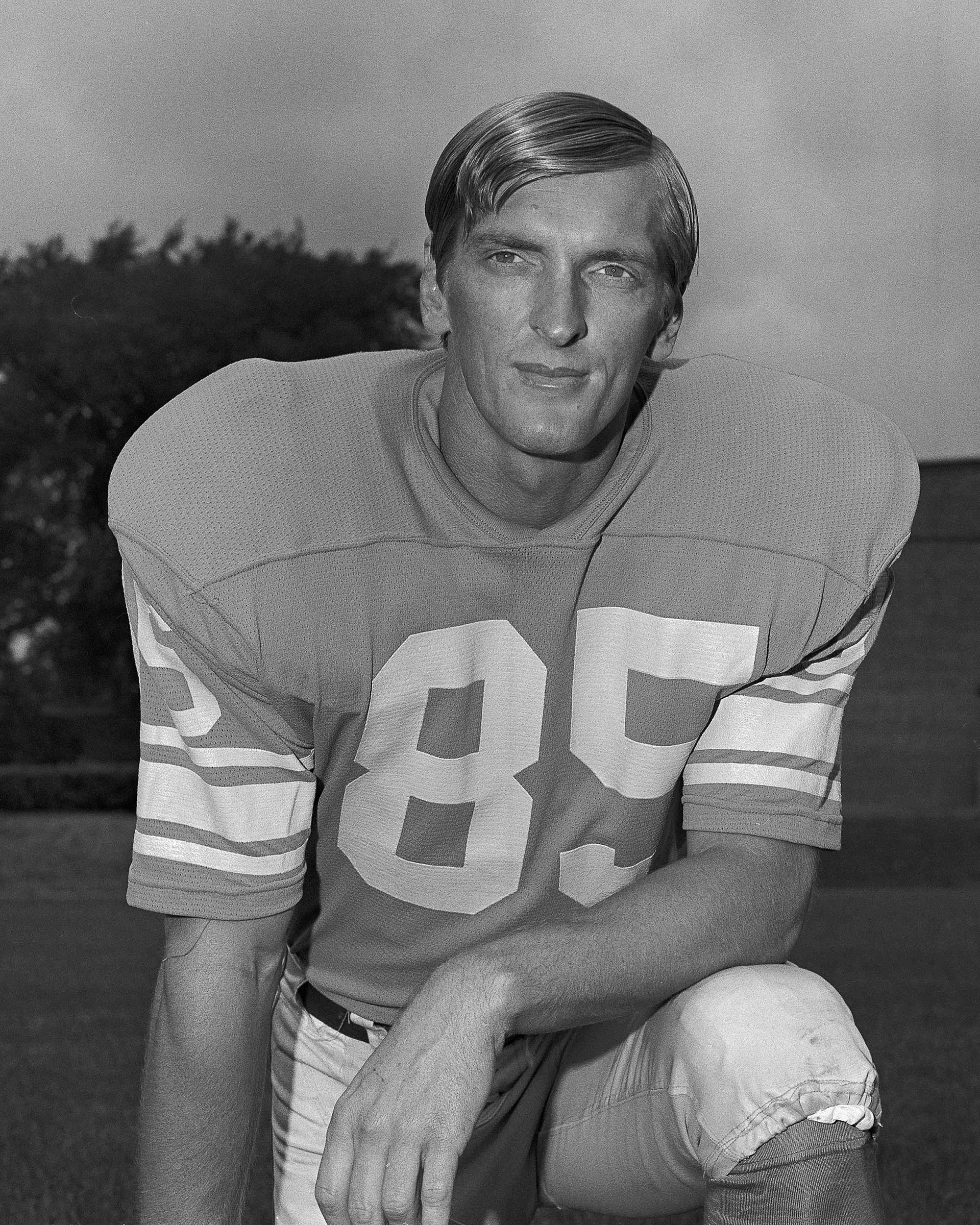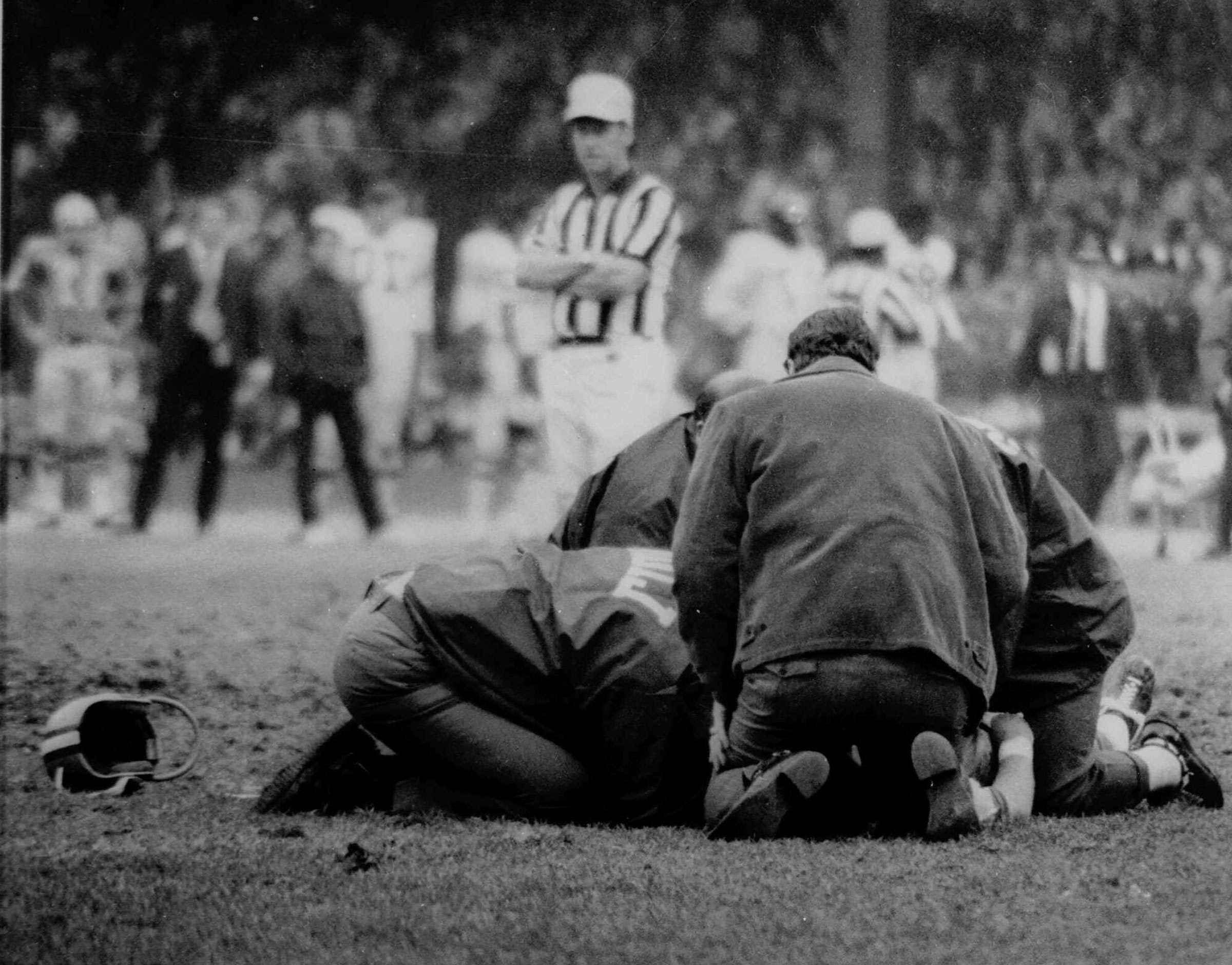
The collapse of Buffalo Bills’ safety Damar Hamlin on the field Monday night shocked fans and left his teammates overcome with emotion, crying and huddling together as paramedics performed CPR loading Hamlin into an ambulance.
Both the Bills and their opponent, the Cincinnati Bengals, agreed to cancel the game—and the National Football League has said it will not resume this week.
Hamlin remained in critical condition on Tuesday. For some fans, the 24-year-old Bills star’s medical emergency evokes the death of Chuck Hughes more than 50 years ago, who also collapsed during a game.
To date, Hughes remains the only NFL player to die after collapsing on the field, according to most sources. The teams did not suspend the game—but instead played the final minute as medics tried to save Hughes.
What happened to Chuck Hughes?

Chuck Hughes, a 28-year-old wide receiver for the Detroit Lions, suddenly collapsed at the end of the fourth quarter of a game against the Chicago Bears in Detroit on Oct. 24, 1971.
His teammates finished off the final 62 seconds of game time after medical aid wheeled Hughes away. Attempts to resuscitate him continued in the hospital, but he was pronounced dead nearly an hour later at Ford Hospital due to a heart attack.
An autopsy confirmed Hughes suffered from arteriosclerosis heart disease, per an archived article by the New York Times. Prior to the incident, Hughes had complained of pain in his stomach and chest, but no doctor had found evidence of the disease despite numerous tests.
The Lions retired Hughes’ no. 85 jersey to commemorate his passing, though ESPN reports it has been fielded recently.
NFL suspended game for Damar Hamlin
After Hamlin collapsed on Monday, both the Bills and Bengals agreed to suspend play, and the NFL ultimately ended the game with no plans to resume the game this week. It’s a decision that has widely been agreed as the right thing to do given the circumstances.
The NFL maintains that was the plan all along, though ESPN’s Joe Buck said during the broadcast that players were told they had five minutes to warmup to continue the game. The NFL denies Buck’s statements, but Buck reaffirmed this stance to the New York Post in an interview.
“Neither coach was talking about resuming play, the players were not thinking of resuming play,” said NFL executive vice president of Football Operations Troy Vincent. “How do you resume play after seeing such a traumatic event?”
The NFL’s 2017 Official Playing Rules Manual affirms that in “most circumstances all regular-season and postseason games should be played” for their entire duration. Only if NFL authorities believe it is impossible to continue a match because of an emergency, of which the league lists inclement weather, lightning and power failure as examples, should the game end.
Rescheduling options are to be decided by the Commissioner. Article 9 of the manual indicates that it should be set for no later than two days after its originally scheduled date, though if that’s not possible, the game should be scheduled on the following Tuesday that the two clubs are set to play.
NFL spokesperson Jeff Miller said that there are currently no plans to resume Monday’s Bills-Bengals game during a conference call.
Questions about safety
Still, Hamlin’s collapse kicked off another round of conversations about safety in football—especially during a NFL season with several high-profile injuries on the field.
Concussions and major injuries are common in football, and the NFL has been subject of much criticism for its injury policy since its founding more than a century ago.
READ MORE: Where football goes from here
Changes to better protect players are currently enacted by the Competition Committee, a body in charge of adopting or changing rules. Every season the committee reviews injury data and surveys NFL teams to better assess the sport. There have been more than 50 rule changes implemented since 2002, but it was only in 2011 that the League developed the NFL Game Day Concussion Diagnosis and Management Protocol, which is reviewed every year to “ensure players are receiving care that reflects the most up-to-date medical consensus on the identification, diagnosis, and treatment of concussions.”
In late September, the NFL was under fire after Miami Dolphins quarterback Tua Tagovailoa was allowed to return to a game against the Bills though he was visibly wobbly. In the following game, Tagovailoa was injured again and had to be taken off the field.
Tagovailoa’s being cleared via the NFL concussion protocol in the Bills game led to an investigation. The NFL subsequently revised its policy so that players that are experiencing ataxia, or gross motor instability, cannot return to the field. Previous policy said that if there was another reason for motor issues they could keep playing in the game.
On Sunday, the day before Hamlin’s collapse, Indianapolis Colts quarterback Nick Foles convulsed on the field during a game against the New York Giants in what was later labeled as a rib injury. That same day, the Philadelphia Eagles’ Josh Sweat was taken to the hospital with a neck injury.
More Must-Reads from TIME
- Cybersecurity Experts Are Sounding the Alarm on DOGE
- Meet the 2025 Women of the Year
- The Harsh Truth About Disability Inclusion
- Why Do More Young Adults Have Cancer?
- Colman Domingo Leads With Radical Love
- How to Get Better at Doing Things Alone
- Michelle Zauner Stares Down the Darkness
Contact us at letters@time.com